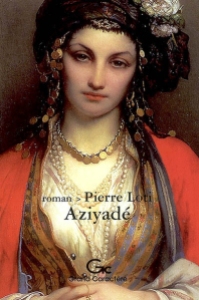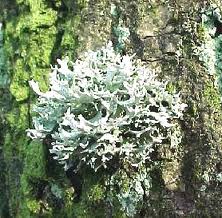 Constantinople, 1876. An illicit love affair between a French officer and an 18-year old harem girl. The heat of the city matching the heat of their passions. Forbidden, dangerous, exotic and sexual.
Constantinople, 1876. An illicit love affair between a French officer and an 18-year old harem girl. The heat of the city matching the heat of their passions. Forbidden, dangerous, exotic and sexual.
Aziyadé by Pierre Loti was a very influential novel in its time and, in 2008, became the inspiration for the tenth perfume by Marc-Antoine Corticchiato, the founder and nose behind Parfum d’Empire. Aziyadé, the eau de parfum, explicitly attempts to replicate that moment in time, back in 1876. As the Parfum d’Empire website explains:
An elixir blending the aphrodisiacs of many cultures throughout history, Aziyadé draws us into a sensuous feast where the pleasures of love are intimately entwined with those of the palate. More than a fragrance, Aziyadé is a flavour. The flavour of the yielding flesh of Aziyadé, the heroine of Pierre Loti’s eponymous novel, the story of a harem in the twilight of the Ottoman Empire. [¶]
Aziyadé , a quintessence of carnal pleasures. A fruity, spice laden oriental, Aziyadé opens with a splash of pomegranate juice before yielding candied date, prune and orange notes. Its cornucopia of aphrodisiac spices draws us into a sensuous feast where tears of incense melt into musk, cistus and carob.
Aziyadé: an outrageously carnal perfume.
The full story is laden with history, sensuality, flashbacks to the Greeks, Romans and even Queen Hatshepsut, displaying “her naked body, rubbed in incense, to honour the god Amun-Ra.” Honestly, with my tastes and life-long obsession with history, how could I not be tempted? Was it not guaranteed that I would love Aziyadé?
 And, yet, I don’t. Aziyadé a lovely perfume, but it didn’t bowl me over or wow me. And I definitely don’t think it’s for everyone — not by any means. Only those who love cumin; very naughty, animalic skank; and dark, musky, sometimes leathery, labdanum should try Aziyadé.
And, yet, I don’t. Aziyadé a lovely perfume, but it didn’t bowl me over or wow me. And I definitely don’t think it’s for everyone — not by any means. Only those who love cumin; very naughty, animalic skank; and dark, musky, sometimes leathery, labdanum should try Aziyadé.
Luckyscent offers Aziyadé’s list of notes which include:
pomegranate, crystallized date, almond, orange and prune, cardamom, cinnamon, ginger, Egyptian cumin, carob, frankincense, vanilla, Madagascar vanilla absolute, patchouli, musk, cistus [or labdanum].
Aziyadé opens on my skin with zesty citrus, cumin, musk, and animalic, leathery labdanum over honey, dates, ginger, prunes and seemingly every single spice known to a Moroccan spice vendor. It’s truly an explosion of scents, all bursting out on the scene within the very first second like a stampede of elephants. In less than a minute, however, the initial blast of very animalic, dark, almost masculine and very dirty labdanum settles a little, softening under a wave of rich, heavy honey. The cornucopia of spices separate, becoming more distinct, and cumin takes the lead. Dried fruits and juicy plum also become more noticeable. And, to my surprise, there really is a subtle note of pomegranates. The perfume is extremely boozy, beautifully complex, layered and rich, but it is also surprisingly airy in feel.

Moroccan Tagine of Lamb, Prunes & Apricots. Source: DimaSharif.com. (Click photo to be taken to website where you can find the recipe.)
As the minutes pass, the perfume starts to change. The labdanum loses a touch of its heavily leathered, dirty facade, turning slowly nuttier and sweeter, thanks to the growing infusion of honey. The cumin also becomes a little less top-heavy, swirling into the eddy of spiced notes and blending in a little better. On my skin, it’s very much like the cumin in a curry — fragrant, aromatic and a little dusky — rather than the cumin associated with body odor. The plum and dried fruit tonalities rise to the surface, followed soon thereafter by two polar opposites: smoky frankincense and rich vanilla extract. The smoke serves to add some dryness, undercutting the sweetness of the strong honey notes, while the vanilla adds a subtle, custardy depth to the foundation. The whole thing becomes a swirl of: juicy orange and citrus; dark, stewed, dried fruits dominated by prunes; molten honey; strong cumin-heavy spices; swirls of smoky frankincense; nutty, almost masculine, labdanum amber; and a touch of sweet vanilla.
A strong vein of animalic musk runs underneath it all. It’s not akin to dirty, unwashed panties on my skin, but it definitely smells a little raunchy, a little naughty. The combination of the leathery labdanum, the musk, and the cumin create a very sexual undertone to the scent, though I have to say I was never transported to the Sultan’s harem. Instead, I was constantly reminded of a Moroccan souk or market. Neither the sweetly zesty citrus notes nor the smoke have the smallest chance of competing with those spices, dried fruits, dirty notes, and honey that are the essence of Aziyadé.
That core essence remains fundamentally unchanged with the passage of time. Only the honey note shifts, taking the lead and becoming the starring note as the cumin fades away. On its heels is that perpetual stewed fruit accord, infused by dirty labdanum and musk, all over a subtle trace of orange citrus. By the fourth hour, the honey becomes even richer and deeper, before eventually taking on a slightly powdered feel. By the eighth hour, the drydown has begun and Aziyadé is a sweet blend of frankincense, vanilla and amber with the sheerest touch of powder. It remains that way for several more hours until it finally fades away.
Frankly, I was astounded by the longevity of this incredibly sheer, lightweight, low sillage perfume on my voracious skin. Aziyadé essentially lasted 12 hours, but I could still detect minute spots of it here or there on my arm well over the 14th hour! It would be jaw-dropping with a stronger, heavier perfume, but for something so sheer? On my skin? Astounding. However, not everyone fared quite so well, and there seems to be a split in opinion about the perfume’s duration. On Fragrantica and elsewhere, some people report that Aziyadé died on their skin after a few hours, while others found it to last an enormous period of time.
There are a few perfumes which Aziyadé called to mind, though they are not very similar at the end of the day. The extremely boozy nature of the perfume’s opening hour strongly reminds me of the start of Hermès’ Ambre Narguilé, only with cumin and animalic notes as a strong vein instead of fruited pipe/hookah tobacco. The late stages of Aziyadé with the slightly powdery, very airy, honey note infused with dry smoke and light musk made me think of the late stage of Serge Lutens’ Chergui which has a very similar honey combination. Chergui, however, is never animalic or skanky, and has tobacco in lieu of leathery labdanum or spices.
Actually, the Serge Lutens fragrance to which Aziyadé is most frequently compared is his Arabie. I have not yet tried it, so I can’t comment, but perhaps this comparative assessment from Now Smell This (“NST”) would be helpful:
Aziyadé is another specimen of the stewed fruits + curry spices genre, although the stewed fruits are mostly in the top notes, and they’re given some lift and tartness here by the pomegranate. Once the top notes fade, for a time it’s nearly a straight-up spice fest. The dry down is woody and only slightly vanillic (it’s more dry than sweet), with mild incense and amber.
It could be a pared down Arabie, but it’s pared down in a very different way than El Attarine. Aziyadé is closer to spicy-foody than El Attarine, and the woods aren’t as velvety-smooth. It’s lighter and drier than Arabie, and possibly more wearable: that all depends on how you feel about cumin. I’m hard pressed to say which fragrance has more cumin — one day it seemed to be Arabie, the next, Aziyadé. I will say that because Aziyadé is a less foody-rich scent than Arabie, the cumin seems to stand out more, and it deepens considerably as it dries down.
The reaction to Aziyadé on Now Smell This, in a review quoted within, and in general assessments throughout the internet are all extremely polarized. NST didn’t like it, and not only because Aziyadé’s drydown turned primarily into “cumin-infused pencil shavings” on Robin’s skin. She likes pencil shavings; she does not like cumin. At all.
There is no doubt in my mind that how you feel about Aziyadé will depend not only on your feelings about cumin but, also, about skanky, animalic perfumes. Those who don’t like the former will consider Aziyadé to smell just like “an old woman’s sweaty armpits,” to quote one disgusted commentator on MakeupAlley, or “yucktastic” and “nauseating” to quote another. By the same token, those who hate animalic notes will find the perfume to have the hint of “dirty panties” and to be the embodiment of “vulgarity,” as one person wrote on Fragrantica.
Yet, those who can tolerate both notes love the perfume and find it exotic, mysterious, or, quite simply, evocative of Christmas. Christmas actually comes up quite a bit in the context of Aziyadé, with a few such references on Fragrantica, like the one below from “sky76sky” who writes:
Aziyade took me straight back to Christmas…not my festive week but one amped & ramped up to theatrical standards -red & gold, velvet, jewels, spangle, spices, candied fruits, brown sugar, … eat up eat up!…..mulled wine, burning logs, pot pourri, fancy linens, oranges studded with cloves, port, plums in brandy [… ¶]
If she were a woman she would be large & sexy, with red lipstick, an artsy scarf, slightly drunk, bejewelled & festooned in glamour from head to toe, the life & soul of the party, dahhhrling,
And the same Christmas feel is mentioned on MakeupAlley, too:
Boozy loveliness, come from a long line of lineage that is Dior’s Dolce Vita and Serge Lutens’s Cedre. Love the combo of cinnamon, spices, dried fruits and dates. Plumier than plums. It gives me flashbacks of biting onto a plum that is ripen to the point that is just before decay, and the juices flowing down the corners of my mouth. A wearable mulled wine &/or apple pie. I would love to wear this to a Christmas Fair!
I enjoyed Aziyadé quite a bit, but I didn’t love it — and my reasons have nothing to do with cumin or animalic notes. In fact, I don’t mind cumin, so long as it doesn’t turn sour or sweaty; and it did not do so here, on my skin. Plus, I thought its honey was truly lovely; gorgeous, in fact, and beautifully balanced with the rich spices and that nutty, leathery, labdanum amber. Also, the price is fantastic for a high-quality, well-blended, niche perfume: $75 for a 1.7 oz/50 ml bottle. No, the reason why I wasn’t enamoured is due primarily to the perfume’s texture and weight.
For me, the airy, sheer feel of the perfume simply wasn’t a good match for those potent notes. If you’re going to have such strong, intense, spicy accords, then you should commit fully and go all the way with a perfume whose texture is opaque, molten, baroque, hedonistic, and decadently rich. If you want carnality, then the perfume shouldn’t be so damn airy and translucent. It should be more like the fabulous Absolue Pour Le Soir by Maison Francis Kurkdjian, a perfume that fully and completely evoked a Sultan’s harem for me, even though it is much less skanky and dirty. That is an animalic, spicy Oriental which conveys sensuous carnality and forbidden passions — not Aziyadé which merely took me to a spice seller’s stand in Morocco’s ancient souks.
I have to wonder if the sheerness of Aziyadé was some sort of compromise intended not to completely terrify those who may struggle with cumin or animalic skank. Perhaps Parfum d’Empire thought the notes would be too much if the perfume were heavy as well. But those who would love and wear a perfume like Aziyadé are those who like potent, opaque, deeply resinous perfumes to begin with. Everyone else will run away from the cumin and the “dirty” notes, regardless of whether the perfume were sheer or heavy. For myself, I far prefer the magnificent Absolue Pour Le Soir, though I would certainly wear Aziyadé on occasion if a bottle fell into my lap.
If you loved honey perfumes with richly spiced, stewed fruits and, more importantly, if you can handle both cumin and slightly dirty, leathery, animalic skank, you should definitely check out Aziyadé. But, if you can’t, then you should stay very, very far away.








 The opening seconds of Azemour were a blast of bitter hay, strong henna powder, black pepper and moss with just the faintest hint of bitter orange. It smells of actual dust, and it evokes the barren, ravaged plains of America in the 1930s or the Sahara. Nor does it get better in those first ten minutes. In fact, as time passes, the dustiness just gets more bitter and green. The oakmoss is pungent and musty, evoking images of grey, mineralized lichen and dust. Usually, the scent of oakmoss in most fruity chypres (which is what Azemour is classified as on
The opening seconds of Azemour were a blast of bitter hay, strong henna powder, black pepper and moss with just the faintest hint of bitter orange. It smells of actual dust, and it evokes the barren, ravaged plains of America in the 1930s or the Sahara. Nor does it get better in those first ten minutes. In fact, as time passes, the dustiness just gets more bitter and green. The oakmoss is pungent and musty, evoking images of grey, mineralized lichen and dust. Usually, the scent of oakmoss in most fruity chypres (which is what Azemour is classified as on 




